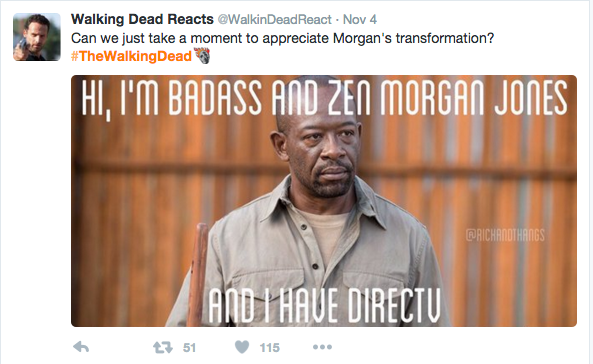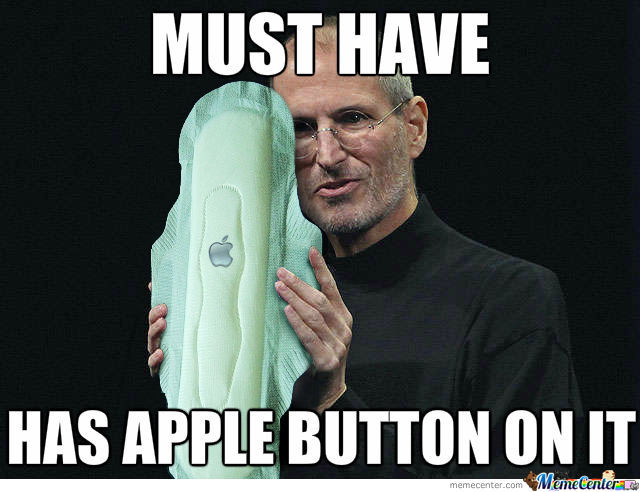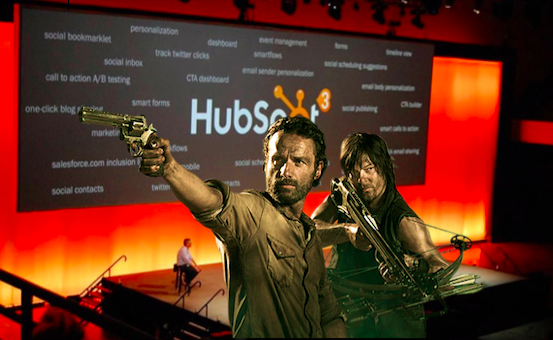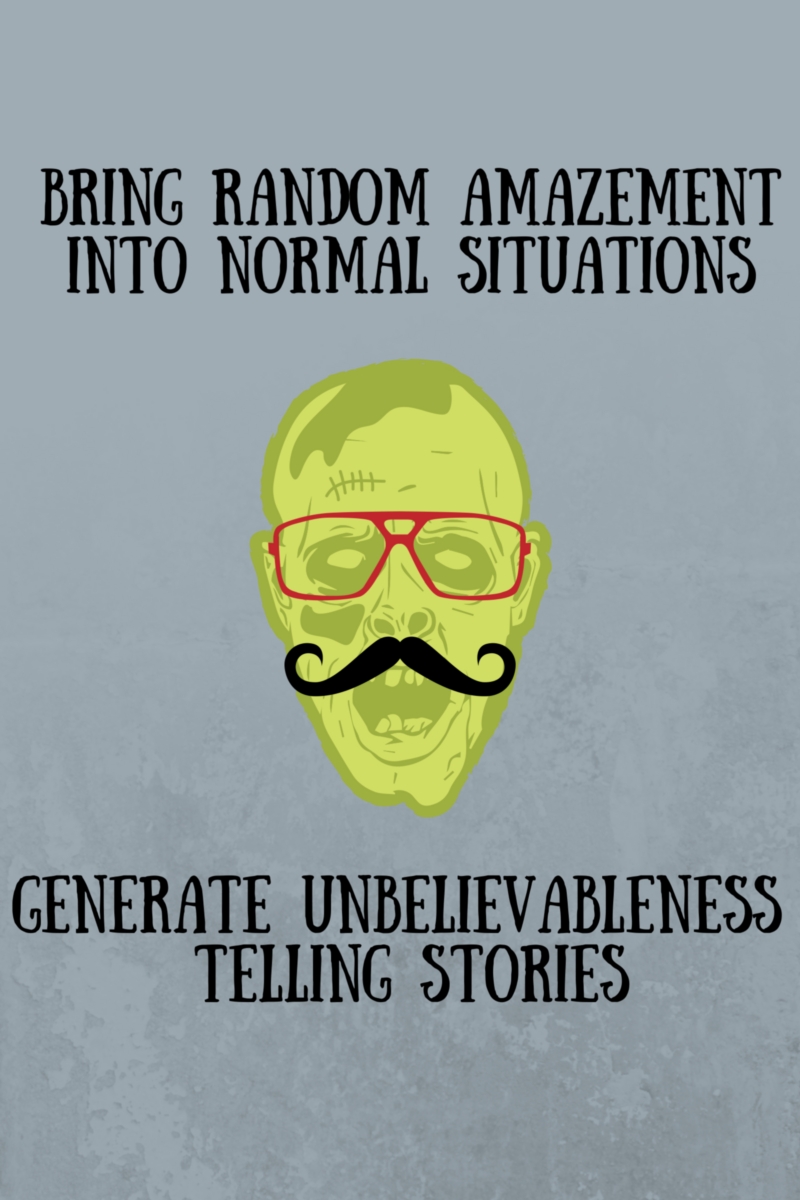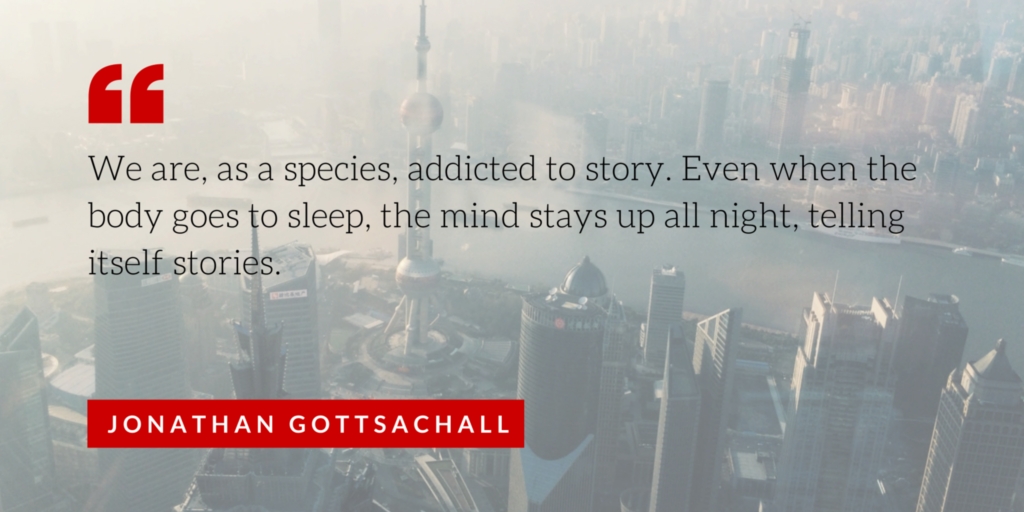How to create content to fuel a zombie’s appetite
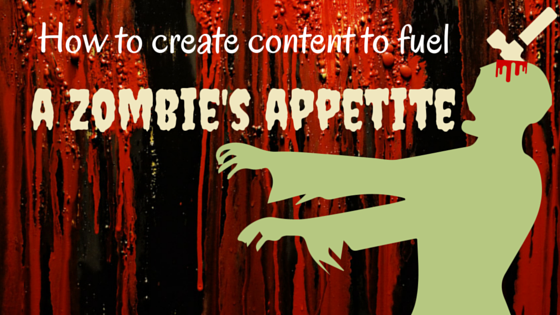
The Walking Dead
I love AMC’s “The Walking Dead.”
After being hesitant about its gruesome content and the strangeness of zombie subculture for all of these years, I finally gave in after multiple “normal” people told me it was worth the watch. I got hooked on it just this year, making sure to catch up to the current season with plenty of Netflix binge sessions.
Part of what makes #TWD such a successful gonfiabile percorso ad ostacoli show (other than its overabundance of gory zombie attacks, as some may argue) is the storyline. And good stories, zombie survival-themed or otherwise, make the experience great. And worth live-tweeting.
The art of (zombie) attraction
You probably know what zombies are all about, regardless of your “Walking Dead” viewership status — make a loud noise or hold up a shiny object and they mindlessly follow with their soulless carcasses.
Basically like this:
Source: gifsoup.com
That’s how you want your customers to respond to your brand.
And which brand feeds more zombies than all the rest? You guessed it, the world’s most valuable brand — Apple. People mindlessly shovel out hundreds of dollars every year or two to buy the next shinier, bigger iPhone. Apple has successfully created zombies.
Hey, maybe that’s where that bite came from.
Source: boredpanda.com
Source: memecdn.com
It happened because a few tech dweebs created not just new technology, but new dreams. New possibilities. New experiences. That’s what the zombies eat up. And since you’re probably not Steve Jobs (R.I.P.), you can attract your zombie following with great content, no matter the size of your company.
Zombie loyalists
While at HubSpot’s INBOUND conference, I went to a zombie-themed session (fully hoping that Andrew Lincoln and Norman Reedus would make an appearance).
Sources: kunocreative.com and deviantart.net
Instead, Peter Shankman, author of Zombie Loyalists: Using Great Service to Create Rabid Fans, emphasized the value of above-and-beyond customer service practices to create outstanding brand loyalty. How, you ask? By using classic zombie prey — BRAINS.
BRAINS stands for “Bring Random Amazement Into Normal Situations”.
Whether in your customer service or content marketing, bringing “random amazement” will:
- penetrate the ordinary
- stun the living
- convert souls
- turn your customers into zombies
Creating irresistible content
Like we’ve learned from Apple, shiny stuff is attractive (and distracting). Your content has the potential to attract and maintain your zombie following, just like shiny objects and noises in “The Walking Dead” or the Monkey Bomb in “Call of Duty Black Ops 3” (note to my husband: this is the only time COD will ever serve any purpose to me).
Making irresistible content takes more than just BRAINS — you need GUTS, too.
BRAINS — Bring Random Amazement into Normal Situations
GUTS— Generate Unbelievableness Telling Stories
People like stories. Storytelling elicits a strong neurological response. So why wouldn’t you use them in your brand’s content?
I looked to the content marketing experts at Copyblogger for some tips on great storytelling and delicious GUTS. Here are a few tips to help you generate unbelievableness by telling stories:
Tell your story. Copyblogger’s anatomy of a meaningful marketing story says a good story has the following components:
- Hero — (cue Bonnie Tyler, or even better, the Shrek 2 fairy godmother) the hero is your customer who has a normal situation that turns into unbelievableness.
- Goal — what does the customer (hero) want or need solved?
- Conflict — What is the obstacle for the customer? Maybe it’s zombies. Everywhere.
- Mentor — Are you the Rick Grimes to your customer’s Glenn Rhee?
- Moral — What is the secret to achieving unbelievableness and how can your customer get there?
- Truth — Because this: “Be interesting. Tell the truth. And if you can’t tell the truth, change what you’re doing so you can. In other words, live the truth.” – Jonah Sachs, Winning the Story Wars
Pick your kind. Copyblogger lays out three simple storytelling formats that can work for your content:
- The personal story — walk the reader through the problem to ultimately lead to a solution.
- The historical story — find the “shiny objects” in a product/company’s history and tell it excitingly. This is a little more research-heavy, but effective and persuasive.
- The “meet-the-guru” story — Tell how an industry expert, stranger on a train or someone like Hershel has helped you solve a problem in your market.
Create a content series. Just like a television series, your content can be intriguing and anticipated. Mastering storytelling takes planning, research, a rich understanding of your audience and a great narrative with beautiful transitions. A series is a great way to have readers look forward to your next “episode,” and can even be easily repurposed for content maximization (ebook, comic book, AMC series, Broadway production, etc.)
At Reputation Ink, we are zombies for BuzzFeed’s “Whine About It” every Wednesday.
You want zombies who crave your content and keep coming back for more. Applying BRAINS & GUTS will turn new prospects and customers alike into content-devouring machines. And the best part? They’ll bring all of their friends along.
What brands have you seen use BRAINS & GUTS successfully?





